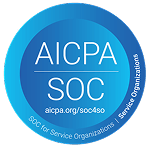FAQs
 What Bangladesh-specific scholarships are available for students planning to study in the U.S.?
What Bangladesh-specific scholarships are available for students planning to study in the U.S.?
Bangladesh students have access to several country-specific scholarship opportunities for U.S. studies. The Fulbright Foreign Student Program reserves a specific quota for Bangladesh nationals each year, providing full funding for master’s and Ph.D. programmes at top U.S. universities. The Bangladesh government’s Ministry of Education offers the Merit and General Scholarship programme that supports outstanding students for international study, with priority given to STEM fields. Several U.S. universities offer Bangladesh student-specific scholarships ranging from US$5,000-US$20,000 (BDT 556,350-2,225,400) annually. Additionally, organisations like the American Institute of Bangladesh Studies (AIBS) provide research grants and fellowships, particularly for Bangladesh students studying development-related subjects, with applications typically due between September and January for the following academic year.
 How can Bangladesh students navigate currency exchange challenges when paying for a U.S. education?
How can Bangladesh students navigate currency exchange challenges when paying for a U.S. education?
Bangladesh students face unique challenges with currency exchange due to the Bangladesh Bank’s foreign exchange regulations. Currently, Bangladesh limits outward remittances for educational purposes to US$12,000 (BDT 1,335,240) annually, which may be insufficient for full U.S. university costs. To navigate this, establish a documentation system with your local bank in Bangladesh (such as Sonali Bank, Eastern Bank Limited or BRAC Bank) that demonstrates the educational purpose of your transfers. Maintain proper paperwork, including your I-20, university acceptance letter and tuition bills. Consider splitting tuition payments across family members to maximize allowable transfers. For larger amounts, pursue formal education loans through Bangladesh banks or international lenders, as these are exempt from personal remittance limits. Many Bangladesh students also establish U.S. bank accounts upon arrival and fund them through permitted channels, then use these accounts for ongoing educational expenses. Remember that currency conversion costs can add 2-3% to each transaction, so plan accordingly by considering the typical BDT-USD exchange rate fluctuations (approximately 4-5% annual depreciation of the taka against the dollar).
 What financial documentation do Bangladesh students need to prepare for financial aid applications?
What financial documentation do Bangladesh students need to prepare for financial aid applications?
Bangladesh students require specific financial documentation that meets international standards while accurately representing their financial situation. Prepare bank statements from Bangladesh banks (like Dutch-Bangla Bank or Prime Bank) with official English translations on bank letterhead, showing at least six to 12 months of transaction history (not just recent deposits). Income verification for parents or sponsors should include tax returns (known as Return of Income or TIN certificates in Bangladesh), salary certificates on company letterhead and business registration documents if applicable. For property documents, which are commonly used as proof of assets in Bangladesh, include English translations of property deeds (“dolil”) with recent tax assessment values. Students applying for need-based aid should document Bangladesh’s cost of living differentials – explaining how a salary that appears modest by U.S. standards (e.g., BDT 100,000 or approximately US$900 monthly) might represent an upper-middle-class income in Bangladesh’s economic context. For scholarships from organizations like the Fulbright Commission or EducationUSA, prepare a comprehensive financial plan showing multiple funding sources, including any contributions from extended family members, which is common in Bangladesh’s collective family structure.
 How do Bangladesh students compare U.S. financial aid options with educational loans available in Bangladesh?
How do Bangladesh students compare U.S. financial aid options with educational loans available in Bangladesh?
When comparing financial options, Bangladesh students should consider local education loans from banks like Eastern Bank Limited or BRAC Bank for international students. Bangladesh bank loans generally require substantial property collateral and guarantors, while some U.S. lenders offer no-collateral options. Bangladesh loans typically limit borrowing to BDT 10-20 lakh (approximately US$9,000-US$18,000), which covers only a portion of U.S. education costs. U.S. institutional aid is particularly valuable as it doesn’t require repayment but is highly competitive – focus on universities with strong international student funding which offer need-blind admissions for international applicants. For Bangladesh government employees or those working at multinational corporations like Grameenphone or Standard Chartered Bank, explore employer sponsorship programmes which may offer more favorable terms than commercial loans. Additionally, Bangladesh students should investigate assistance from diaspora organizations like the Bangladesh Association of America or regional Bangladesh cultural associations, which often provide smaller scholarships specifically for students from Bangladesh.
 What specific work options are available for Bangladesh students to supplement their financial aid in the U.S.?
What specific work options are available for Bangladesh students to supplement their financial aid in the U.S.?
Bangladesh students have specific work opportunities to supplement their financial aid while studying in the U.S. On-campus employment is permitted immediately upon arrival for up to 20 hours weekly during term time and full time during holidays, with positions at university libraries, dining halls and research labs typically paying US$12-US$15 (BDT 1,335-1,669) per hour.After completing one academic year, Bangladeshi students become eligible for curricular practical training (CPT), allowing paid internships related to their field of study. Engineering and computer science students from Bangladesh have particularly strong internship prospects, with companies like Google, Microsoft and Amazon.Upon graduation, Bangladeshi students qualify for optional practical training (OPT), providing 12 months of work authorization, extended to 36 months for STEM graduates. Additionally, many U.S. universities offer graduate assistantships specifically for international students, providing tuition waivers plus stipends of US$15,000-US$30,000 (BDT 1,669,050-3,338,100) annually for teaching or research duties. These positions are especially accessible in fields where Bangladeshi students often excel, such as engineering, computer science and economics.
